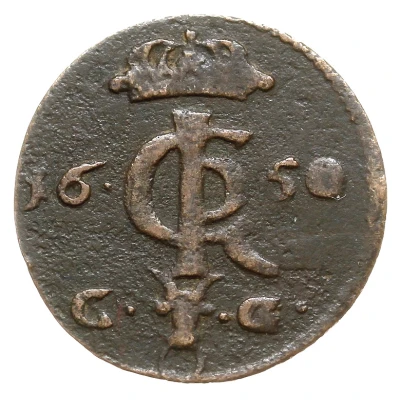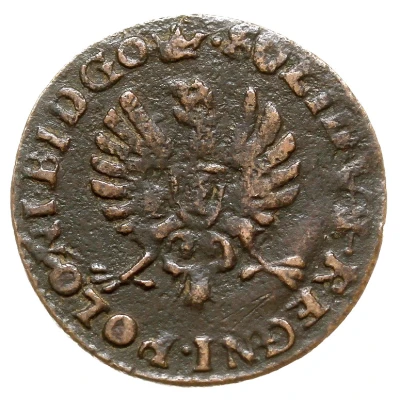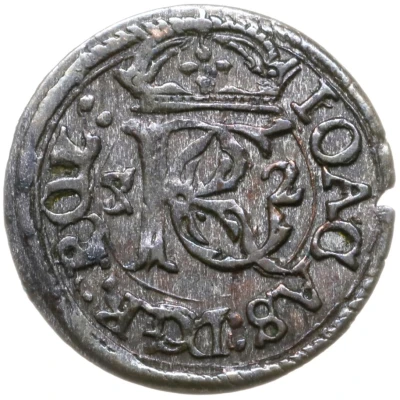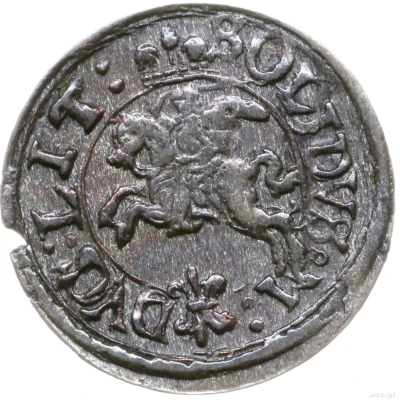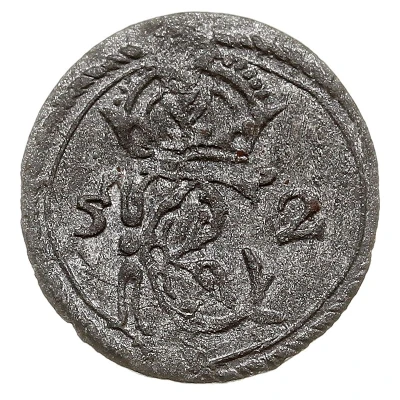
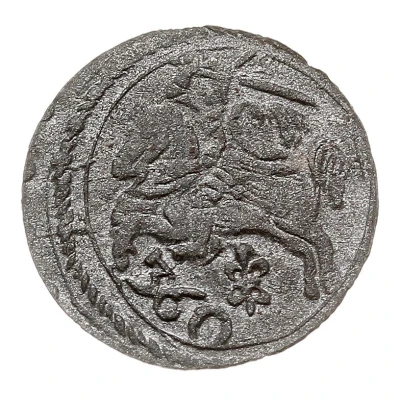

© Warszawskie Centrum Numizmatyczne s.j.
¼ Groschen - John II Casimir Vasa Vilnius
1652 year| Billon (.125 silver) | 0.4 g | 14 mm |
| Issuer | Polish–Lithuanian Commonwealth |
|---|---|
| King | John II Casimir Vasa (1649-1668) |
| Type | Standard circulation coin |
| Year | 1652 |
| Value | 1 Schilling (1 Szeląg) (1⁄90) |
| Currency | First Zloty (1573-1795) |
| Composition | Billon (.125 silver) |
| Weight | 0.4 g |
| Diameter | 14 mm |
| Shape | Round |
| Demonetized | Yes |
| Updated | 2024-10-07 |
| Numista | N#96751 |
|---|---|
| Rarity index | 100% |
Reverse
Lithuanian Vytis, 360 indicating nominal 1/360 thaler value, treasurer's (Mykolas Gedeonas Tryzna) coat of arms. Double circle on the edge.
Comment
Alternative names: Dwudenar, szeląg, šilingas
Some authors call it schilling. Coin design is similar to two deniers and it is lighter than coins with SOLIDVS name. 360 in reverse indicates nominal 1/360 thaler value. Period trial groschen uses 90, 1½ groschen uses 60 and 3 groschens use 30 to indicate their ratio to thaler. It makes coin a ¼ groschen.
Kopicki 3578
Punch 1: 360
Pictures: © WCN
Punch 2: 60
Pictures: © WCN
Interesting fact
The ¼ Groschen coin was minted during the reign of John II Casimir Vasa, who was the King of Poland and Grand Duke of Lithuania from 1648 to 1668. The coin features an image of the king on one side and the Polish coat of arms on the other. The use of billon, a silver-copper alloy, was a common practice in coinage during this time period, as it helped to reduce the cost of production while still maintaining the coin's value. Despite its small size and relatively low value, the ¼ Groschen coin is a significant piece of numismatic history and a testament to the rich cultural heritage of the Polish-Lithuanian Commonwealth.
